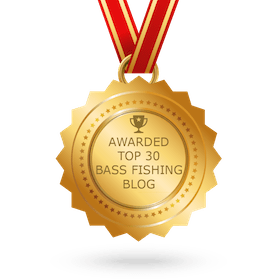Another successful milestone has been reached in the recovery of shoal bass, a Florida Species of Greatest Conservation Need, by the Florida Fish and Wildlife Conservation Commission’s (FWC) freshwater fisheries biologists and managers.

In May 2022, biologists with the FWC’s Fish and Wildlife Research Institute and the Division of Freshwater Fisheries Management released 3,300 1- to 2-inch genetically pure, hatchery-spawned shoal bass from the Blackwater Fisheries Research and Development Center into the Chipola River to supplement and enhance the species’ population. This river is home to Florida’s only known reproducing population of shoal bass, which is potentially the species’ most genetically pure population existing within its native range.
In 2018, the Chipola River population of shoal bass was nearly destroyed by Hurricane Michael. Impacts from the storm resulted in nearly a 90% decline in the shoal bass population, which was already at risk from habitat limits and degradation as well as genetic hybridization threats.
Recent sampling in September by FWC researchers discovered the released fish from May 2022 have made a significant contribution to the existing population. DNA analysis of fin clips taken from shoal bass collected during these sampling events confirmed that 65% of the yearlings (young fish) collected were from fish produced and released by Blackwater Hatchery. These stocked shoal bass have grown to 4 to 6 inches in length in the four months since being stocked. Additionally, this data suggests that these successfully stocked fish may comprise nearly 20% of the entire current shoal bass population in the river.
“The shoal bass population in the Chipola River has become a top priority of fisheries biologists within the northwest region of Florida since Hurricane Michael,” said Andy Strickland, FWRI fisheries biologist. “Management actions to suspend harvest and successfully stock shoal bass have yielded positive results for this unique black bass species.”
FWC biologists anticipate stocking additional hatchery-reared shoal bass in the Chipola River in the spring of 2023 to increase the number of genetically pure fish in the population and eventually restore population numbers to pre-Hurricane Michael levels.
“This cooperative management, hatchery, and research actions for the conservation of this unique northwest Florida bass species exemplify how effective the FWC’s efforts can be to preserve a species of greatest conservation need,” said Christopher Paxton, DFFM Regional Fisheries Biologist, and Administrator.
The population will continue to be monitored to determine if additional stocking will be needed in future years. The continued use of DNA analysis will allow biologists to determine if stocked fish have successfully contributed to the overall population and is a critical part of determining the success of this FWC Stock Enhancement Program and the conservation and enhancement of this native black bass species.
The Chipola River originates just north of Marianna, flowing south for 95 miles through Jackson, Calhoun, and Gulf counties where it joins the Apalachicola River. Currently, a Catch-and-Release-Only regulation is in effect for shoal bass on the Chipola River and its tributaries. Any shoal bass that is caught must be released alive immediately and possession is prohibited. To learn more about FWC’s freshwater fisheries conservation work, visit MyFWC/Freshwater











